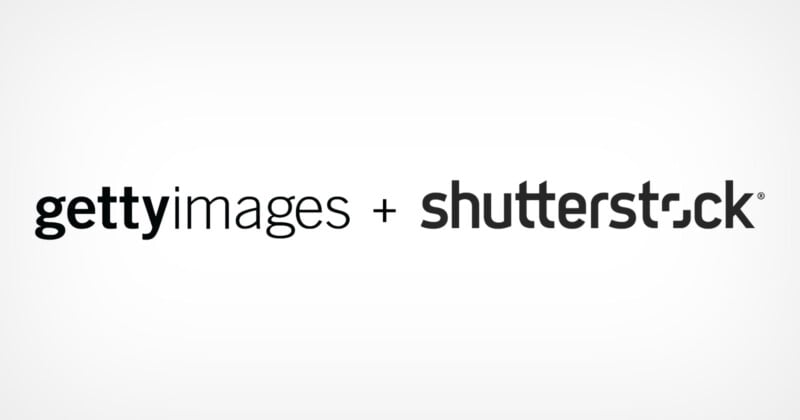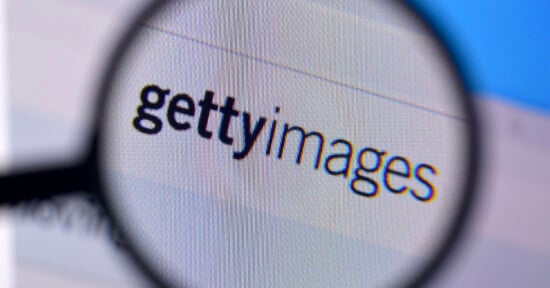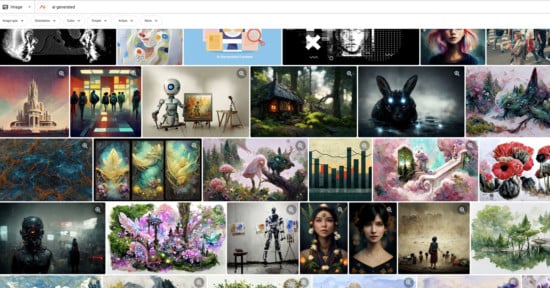Stock Photography’s Crossroads: Can a Getty-Shutterstock Merger Fix It?

As someone who spent over a decade in the stock photography and creative tools industry, I’ve seen firsthand how it has evolved. The news of a potential Getty and Shutterstock merger made me think about how the stock photography industry actors found themselves at a crossroads and what future lies ahead. This is a big deal, but can it really fix the problems of falling prices, AI disruption, and unhappy contributors?
Let’s look at how we got here and what the future holds.
The stock photography market’s consolidation into an oligopoly didn’t happen overnight. Getty Images, Shutterstock, Adobe Stock, and to some extent Canva, now dominate, but their journeys to this position have been vastly different.
Getty Images: Growth in Early 2000s Halted by Massive Debt
Getty Images was one of the first to enter the market of content licensing and remains the only company that has seen the full industry evolution from an expensive, contributor-rewarding rights-managed model to a one-size-fits-all microstock royalty-free approach fueled by technological progress and globalization. In the late 1990s and early 2000s, it built its dominance by acquiring tens of photography collections and responding to market threats with acquisitions like iStockphoto and Jupiterimages. Notable acquisitions such as WireImage and Hulton Archive cemented its editorial dominance, which could only be challenged by real-time coverage from Reuters or Associated Press.
For commercial photography, there were times when professional photographers leaned on Getty above everything else, and being accepted there was akin to winning a lottery ticket. On the business side, Getty’s dominance in news, sports, and entertainment imagery made it the go-to platform for publishers, broadcasters, and marketers needing timely and exclusive visuals. However, the growth spurt didn’t last forever. A private equity leveraged buyout put massive debt on the company, halting its growth. While Getty remains a great business and an undeniable market leader in editorial, archives, and premium imagery, its revenues have been close to stagnant for the past 15 years.
Shutterstock: Technology Disruptor
Shutterstock began as a creative-first platform, focusing on royalty-free commercial imagery. Unlike Getty, it avoided editorial content for years. Its momentum surged when Insight Partners injected $50M into the company to create a new market leader. Aggressive technology innovation spurred growth, marked by a successful IPO. In 2014, Shutterstock reported $328M in revenues with a remarkable 39% YoY growth rate.
However, Adobe’s 2014 acquisition of Fotolia forced Shutterstock to rethink its strategy. This led to the launch of Shutterstock Editor (2015) and a series of acquisitions to diversify its offerings:
- Bigstock (2009): Early entry into microstock.
- WebDAM (2014): A DAM tool later sold for a profit.
- Rex Features (2015): Entry into editorial content.
- TurboSquid (2021): Leader in 3D content.
- PicMonkey (2021): A design tool acquisition.
- Envato (2024): Acquired for $245M to target price-conscious customers.
While these acquisitions helped Shutterstock expand, they also highlighted challenges in achieving organic growth in recent years. Despite its expanded portfolio spanning commercial videos, music, editorial content, and AI-driven data licensing, Shutterstock’s core downloads have remained stagnant or declined. The company’s scale is huge, with over $900M in revenue, but its $1B-something market cap reflects uncertainty about the future.
Adobe Stock: The Ecosystem Giant
Adobe’s entry into stock photography through its acquisition of Fotolia was strategic. By integrating Adobe Stock into Creative Cloud, Adobe locked in a loyal user base and created a seamless experience for its customers. This synergy has been a significant driver of Adobe Stock’s growth, with Creative Cloud reporting $12.5B in revenue for FY2023. Unlike Getty and Shutterstock, Adobe has focused on its ecosystem rather than dominating the broader market.
The Current Landscape
Now, the merger of Getty and Shutterstock creates a giant valued at upwards of $3.7B, solidifying the oligopoly but raising critical questions about how they’ll navigate an industry facing declining prices, contributor dissatisfaction, and the existential challenge of generative AI.
Generative AI: The Existential Challenge
Generative AI tools like OpenAI, MidJourney, Stability AI, and others are fundamentally changing the way visual content is created. Lesser-known tools, like KREA.ai built on Flux, are capable of generating bespoke content on demand, but adoption remains slow due to the time and skills required to master the proper prompts. The learning curve, inconsistent results, and copyright uncertainty hold back the broader market penetration of these AI tools, but this will eventually be resolved, as it has been with every significant disruption in modern history.
On the other side, editorial imagery remains somewhat insulated from this disruption. You can’t generate real-time images of major events, celebrities, or sports games using AI. However, the same forces driving down creative content prices are impacting editorial collections, albeit at a slower pace. For Getty and Shutterstock, their combined editorial offering will be a competitive edge, warranting its presence as a vital tool regardless of AI progress.
On the creative side, AI training data has become a critical revenue stream. Both Getty and Shutterstock have been licensing their vast libraries to AI companies, leveraging their proprietary content for training generative models. When those efforts are combined and aligned within a single company, it will create significant leverage that may lead to success in copyright disputes. Companies like Stability AI, currently facing lawsuits from Getty Images, might find themselves left with few options other than settling before losing in court. However, relying on data licensing as a lifeline is not sustainable. As AI models become more self-sufficient, their dependence on licensed training data will diminish, leaving platforms scrambling to replace this income.
Contributors: The Backbone Under Pressure
Most analyses leave contributors aside, but I won’t. Contributors have always been the backbone of stock photography platforms but their relationship with these platforms is increasingly strained. Getty historically pays contributors low percentages of the customer-paid prices. Shutterstock, in contrast, has maintained higher royalty levels and established minimums for RPD, providing more stability for contributors. However, both platforms are likely to push contributors further as they face mounting pricing pressure and AI disruptions.
Exclusive contributors may find new opportunities as platforms look to differentiate their libraries, but for non-exclusive creative content suppliers, royalty squeezing seems inevitable. The oversupply of creative imagery and contributors’ inability to unite for action only exacerbates the issue. The last notable success was the anti-DollarPhotoClub movement a decade ago.
Does It Really Matter?
The hard truth is that technological progress, globalization, and the competitive growth race among agencies have led to an oversupply of creative imagery. Examples of this oversupply are everywhere. Search for any generic term on a stock platform, and you’ll find thousands, if not millions, of similar images. This glut, combined with AI’s ability to generate hyper-specific content, has devalued creative imagery across the board. Platforms need to reimagine their role in this new landscape. For businesses, this means stock photography platforms need to provide more than just access to images—they need to offer tools, integrations, and unique value propositions.
Getty and Shutterstock have significant incentives to adapt. Their vast libraries give them leverage over AI companies, enabling them to monetize their data for training while they still can. At the same time, both platforms must move quickly to integrate generative AI into their ecosystems. While they already have numerous AI-related deals and capabilities, to stay relevant in the creative content market, they might need to heavily invest in proprietary generative AI models or bet (if not acquire) on ethical platforms like BRIA.ai.
This could mean offering proprietary AI-powered tools that allow contributors and users to create and manipulate visuals on demand. Without this shift, they risk losing relevance as businesses turn to platforms that provide seamless, on-demand solutions.
The Getty Images/Shutterstock merger is a defensive move in a rapidly evolving industry. It creates a dominant force with vast content libraries and operational scale, but it doesn’t solve the fundamental challenges facing the stock photography market. Generative AI is reshaping how businesses think about content creation, putting immense pressure on traditional stock models. Contributors, already strained, will likely face further royalty cuts or be left out entirely as platforms adapt to new market realities.
For Getty and Shutterstock, the path forward lies in leveraging their strengths while embracing the future. They must invest in AI tools, move beyond the era of simply boasting the largest content library, and redefine their value proposition. To remain relevant, they need to evolve from merely selling images to truly becoming a creative platform and find ways to integrate seamlessly into the workflows of their users. The merger buys them time, but the real question remains: Can they innovate fast enough to remain indispensable in an industry that’s being disrupted from every angle?
About the author: Vadym Nekhai is the former CEO of Depositphotos, where he started as the Chief Marketing Officer at the company in 2012. He served as Vice President of the organization after it was acquired by Vista Print, now known as simply Vista, from 2021 until 2024. For more on this topic, Nekhai published a lengthy version of the above in a blog post on LinkedIn.



